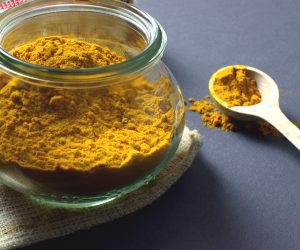
Ultraviolet Light Treats Influenza?
Al Sears, MD, CNS – The healing power of ultraviolet light (UV) has flown under the radar for decades. Yet, it’s one of the most powerful detoxifying agents known to man. It kills bacteria and viruses and can be used in a clinical setting. The therapeutic benefits of light have been known for millennia. Hippocrates, the father of modern medicine, believed light was essential to balance the body and emotions.
And there is good reason why, during the Spanish flu pandemic of 1918, medics discovered that severely ill patients had hugely better recovery rates when they were nursed outside and had regular exposure to sunlight.1
You see, UV rays from the sun are a natural germicide and have been shown to deactivate the influenza virus, as well as bacteria that cause lethal secondary respiratory infections.2
Patients placed in sunlight also benefited from a boost in vitamin D3, which is synthesized when UV rays strike your skin, and are the key to ramping up your immune system defenses.
Today, I’ll show you how UV therapy works, how I use it at my own clinic, and how you can harness the healing power of the sun in your own backyard.
UV Light Safely Treats Dozens of Diseases and Health Concerns
In the late 1920s, a doctor in Washington developed a system in which a patient’s blood was taken and run through a rudimentary “ultraviolet light box,” before being re-injected back into the patient’s bloodstream.
He called the treatment “ultraviolet blood irradiation” or UPI therapy. (Also known as UVBI.) For the next three decades, doctors across America used it to successfully treat dozens of different types of viral and bacterial infections.
These included septicemia, pneumonia, tuberculosis, botulism, influenza, mastoiditis, sinusitis, acne and even polio — as well as cancer, rickets, psoriasis, lupus, asthma, pain management, and smallpox lesions.
Clinical research from the 1930s and 1940s confirmed the healing power of UV light. One study from 1948 revealed UBI therapy was used to cure 15 of 15 hospitalized patients of viral pneumonia — which is also one of the lethal complications of a coronavirus infection. 3,4,5,6
But, with the rise of antibiotics in the 1950s — UV light therapy was pushed to the fringes of medicine in America. Medical UV research shifted to Russia and Germany, where new generations of intravenous UV-emitting laser devices were developed to irradiate blood.
How I Use UV Light at the Sears Institute for Anti-Aging Medicine
At my clinic, I use intravenous (IV) laser therapy — a technique that injects the healing power of ultraviolet directly into your bloodstream via low-level laser light.
These soft, low-power lasers have nothing to do with surgical lasers, which are used to cut, cauterize, and burn out diseased tissue. Instead of generating a heat effect, soft lasers glow cool. Instead of destroying tissues and cells, they repair them.
One of the most astonishing biological benefits of IV laser therapy is its energizing effect on your mitochondria, the tiny power plants in each of your cells.
These organelles make a kind of chemical energy called adenosine triphosphate, or ATP, by synthesizing nutrients from your diet and the oxygen carried by your red blood cells.
ATP is fuel for your cells.
If your mitochondria stop producing ATP, your cells simply run out of gas. This causes organs and tissues to malfunction, leaving you prone to any number of infectious and chronic diseases.
Multiple studies show that mitochondria act as photoreceptors for laser light. As soon as your mitochondria are hit with the soft laser light, they immediately switch into a higher gear and begin producing more cellular energy.
You won’t just feel hyper-alert and brimming with energy after IV laser therapy, which patients usually do — studies show that it can triple your general sense of well-being.8
The mitochondria boost also occurs in the cells that make up your immune system, turbocharging your body’s defenses against infection and disease.
IV laser therapy has also been shown to increase the synthesis of nitric oxide, an important signaling chemical that relaxes your blood vessels and allows more oxygen-rich blood to flow through your body.9
This is key to fighting the coronavirus, because — like cancer cells — viral and bacterial pathogens can’t live in high oxygen concentrations. These anaerobic (without oxygen) germs are unable to survive when your cells are saturated with oxygen.
The great thing about IV laser therapy is that it’s as fast and painless as a blood test. Here’s what happens…
- A tiny catheter is inserted in your arm at the vein in your elbow. The tip of the catheter has a tiny bulb that emits a special laser beam.
- As the blood flows past the laser light it is radiated with a light beam.
- In about 10 minutes, all your blood has circulated past the beam. That’s it!
If you’d like more information on IV laser therapy, just call my clinic staff at 561-784-7852 for details. Or you can visit the website at www.searsinstitute.com.
Get the Benefits of UV Light at Home
You shouldn’t confuse these soft, UV-emitting lasers with the powerful artificial UV-C light used in hospitals and water treatment plants as a disinfectant. Natural UV-C light can’t break through the earth’s ozone layer and germs have no resistance to it. It’s also dangerous to humans.
Instead, IV laser therapy emits UV-A and B waves, which your body also absorbs from sunlight.
I’m not a fan of the handheld laser wands you can buy on the Internet either. These are usually sold for pain relief, but they won’t irradiate your blood in the way IV lasers do.
The best way to get the healing benefits of ultraviolet light at home is to get out in the sunshine.
Here’s what you can do:
1. Get out into the sun. It’s your best source of vitamin D.
• You need at least 20 minutes of sun every day for pale skin tones, but 30 to
60 minutes for darker skin tones. Make sure to avoid burning.
• If you tan as you do this, increase your exposure a few minutes every day.
• If you have sensitive skin, or burn quickly, get 15 minutes of sun twice a day
— as the sun rises and sets.
2. Take 2,000 IU to 5,000 IU of a good quality vitamin D3 supplement daily, also called cholecalciferol. It’s the same vitamin D3 your body produces. Just be sure to avoid the synthetic form of vitamin D2, because it is less potent and less absorbable.
I recommend at least 2,000 IU a day — and taken in the morning. That leaves you plenty of room for you to get additional vitamin D from other sources like the sun and your diet. But if you’re fighting disease, you’ll need more.
Doses of 6,000 IU to 8,000 IU are common, even if you’re not battling disease. Some people need more than others. Ask your doctor for a vitamin D3 test to make sure you know where you stand.
To read the original article click here.
For more articles from Al Sears, MD click here.
References
1. Hobday R. “Coronavirus and the Sun: A lesson from the 1918 influenza pandemic.” Medium. March 10, 2020.
2. Schuit M, et al. “The influence of simulated sunlight on the inactivation of influenza virus in aerosols. J Infect Dis. 2020;14;221(3):372–378.
3. Hancock VK and Knott EK. “Irradiated blood transfusion in the treatment of infections.” Northwest Med. 200(33). 1934.
4. Knott EK. “Development of ultraviolet blood irradiation.” Am J Surg. 1948;76(2):165-171.
5. Barrett HA. “The irradiation of autotransfused blood by ultraviolet spectral energy. Result of therapy in 110 cases.” Med Clin N Am. 1940;24(3):723-732.
6. Miley GP and Christensen J. “Ultraviolet blood irradiation therapy in acute virus and virus-like infections.” Rev Gastroenterol. 1948;15(4):271-283.
7. Hahmi JT, et al. “Role of low-level laser therapy in neurorehabilitation.” PM R. 2010;2(12 Suppl 2): S292–S305.
8. Momenzadeh S, et al. “The intravenous laser blood irradiation in chronic pain and fibromyalgia.” J Lasers Med Sci. 2015;6(1):6-9.
9. Kazemikhoo N, et al. “Modifying effect of intravenous laser therapy on the protein expression of arginase and epidermal growth factor receptor in type 2 diabetic patients.” Lasers Med Sci. 2016;31(8):1537-1545.






